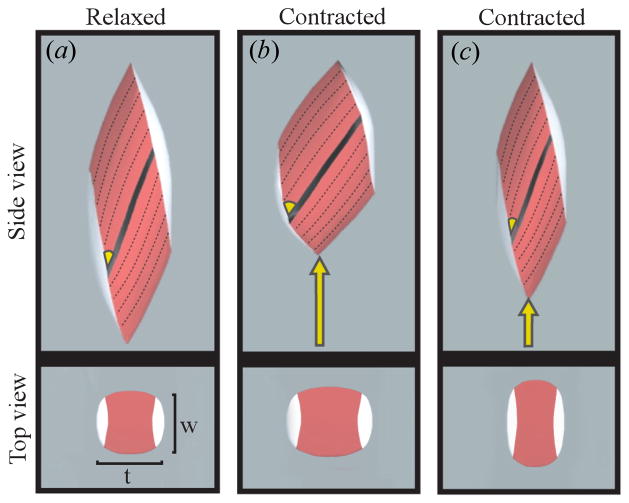Figure 1.
Simulations of contractions in an isovolumetric, three-dimensional, virtual pennate muscle. (a) The muscle belly and aponeurosis shown at rest. Note the specified muscle thickness (t) and muscle width (w), both measured in planes orthogonal to the line of muscle action. (b) A simulation of a contraction in which muscle fibers shorten by 13% of resting length with an increase in thickness and pennation angle. This contraction produces a large amount of muscle shortening (arrow) and a high gear ratio, favoring velocity. (c) A simulation of a contraction in which muscle fibers shorten by 13% of resting length with a decrease in thickness and a small amount of fiber rotation. This contraction results in a small amount of muscle shortening (arrow) and a low gear ratio. The decreased fiber rotation also favors force production because a higher component of fiber force remains aligned with the muscle’s line of action. Adapted from Azizi et al. 2008.

